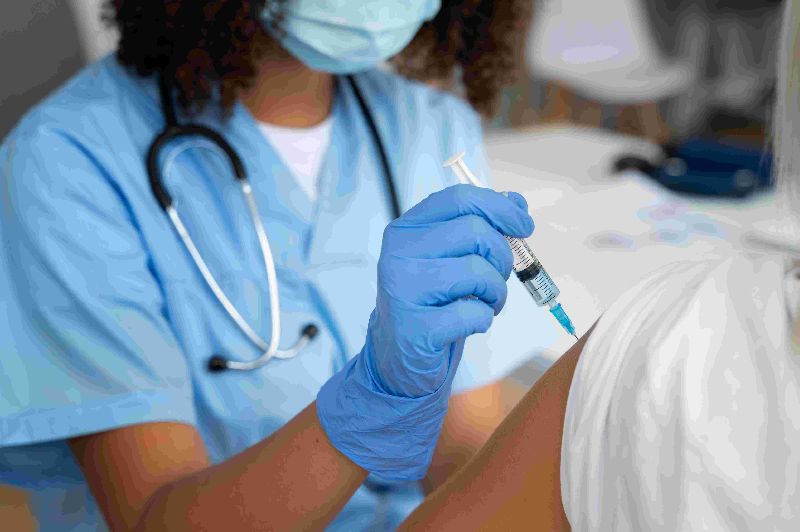by H. Lee Moffitt Cancer Center & Research Institute
Electron micrograph of a negatively stained human papilloma virus (HPV) which occurs in human warts. Credit: public domain
A new study has unveiled crucial information about the incidence and risk factors of oral human papillomavirus (HPV) infections among men in the United States, Mexico and Brazil. Moffitt Cancer Center researchers have discovered how often new oral HPV infections occur, the factors influencing their acquisition and the regional variations in infection rates.
Their study, published in Nature Microbiology, sheds new light on the risks associated with oral HPV, which is linked to up to 90% of all oropharyngeal cancer cases in men in the U.S.
Led by Anna Giuliano, Ph.D., the study found the risk of acquiring oral HPV was notably higher in the U.S. compared to Brazil and Mexico. The incidence rates for HPV remained stable over time, indicating a persistent risk.
The study also identified several key factors associated with higher risk of oral HPV infection:
Age: Men remain susceptible to acquiring new oral HPV infections throughout their lifetime
Education level: Men with higher education had an increased risk of infection.
Alcohol consumption: Higher alcohol intake was linked to a greater risk.
Sexual behavior: Risk was elevated among men with multiple female sexual partners, those who frequently performed oral sex and those with male sexual partners.
Oral health: Losing teeth due to oral disease was also associated with a marginally increased risk.
"Our study underscores the importance of continued vigilance against oral HPV infections," said Giuliano, founder of the Center for Immunization and Infection Research in Cancer at Moffitt. "The consistent rate of HPV acquisition across ages and the significant regional variations call for tailored vaccination strategies and greater awareness to help prevent HPV-related oropharyngeal cancers."
Kaplan–Meier estimates. Credit: Nature Microbiology (2024). DOI: 10.1038/s41564-024-01834-3
These findings emphasize the ongoing risk of oral HPV infections throughout a man's life and highlight the need for improved public health strategies. The study advocates for gender-neutral HPV vaccination programs and catch-up vaccinations for middle-aged men who missed earlier opportunities for immunization.
"Our work highlights the critical need for public health initiatives that address both sexual behaviors and lifestyle factors," said Racheal Mandishora, Ph.D., an applied research scientist in the Cancer Epidemiology Department at Moffitt. "By improving education and vaccination coverage, we can significantly reduce the incidence of oral HPV and its associated risks."
The HPV vaccine is recommended for everyone ages 9 to 26. Adults between 27 and 45 who have not previously been vaccinated are also eligible.
More information: Racheal S. Dube Mandishora et al, Multinational epidemiological analysis of oral human papillomavirus incidence in 3,137 men, Nature Microbiology (2024). DOI: 10.1038/s41564-024-01824-5
Factors associated with oral HPV infection among a large multinational cohort of men, Nature Microbiology (2024). DOI: 10.1038/s41564-024-01834-3
Journal information: Nature Microbiology
Provided by H. Lee Moffitt Cancer Center & Research Institute







Post comments